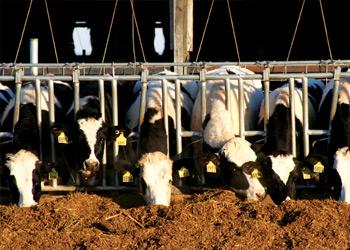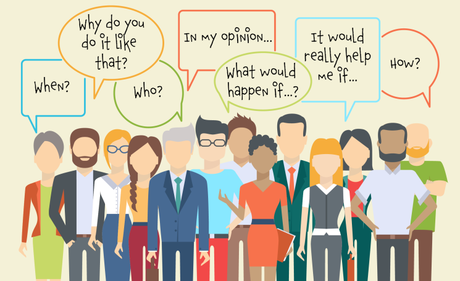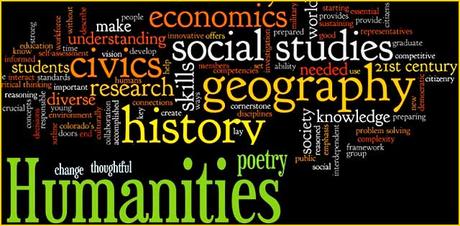What curriculum changes are needed for schools, regarding global changes and sustainability?
Current Approach
The European Commission’s climate plan is limited to reducing carbon emissions by industries. It has goals, but not strategies on how to reach those goals. It covers sectors such as electricity, mobility, industry, built environment, and agricultural and land use. However, the plan does not address the transition to a more sustainable environment and how to install mechanisms in society that can facilitate this.

Yes, there are dramatic calls for action – be responsible, mind your grandchildren, do not waste natural resources. But ideas to change the way we think and to embed that in public policies, laws, and institutions are totally lacking.
There is no approach at all for higher education regarding Global Changes.
Italy is the only exception where all students are required to learn about climate changes.
“Each year, teachers at all grade levels will be required to include 33 hours of education about climate change and related topics. The lessons will be integrated into existing civics classes, as well as other traditional subjects such as geography, maths, and physics. It is proposed that 6 to 19 years olds will spend a minimum of one hour a week on topics such as ocean pollution, sustainable living, and renewable resources. Subjects like geography and physics will be taught from the perspective of sustainable development.” (UNESCO, 2020).
Intensive Child Farming in Schools

The big piece that is missing in the approach in primary schools is linked to the intensive child farming in schools. This approach is characterized by its mechanisms of mass education which cripple imagination, discourage critical thinking, and create a false view of learning as a byproduct of rote-memorization drills *).
Educational Needs
What are the educational needs on how to deal with global warming and sustainability?
Or reformulated:
To what extent does our traditional education system contribute to the maintenance or even growth of the problems of global warming and sustainability?
Primary Schools
Do primary school children need to learn about climate change, biodiversity, and sustainability?
Today, schoolchildren across the globe have put climate change in focus with the school strikes that began by Greta Thunberg. Children will have to live with the consequences of climate change, plastic pollution, and loss of biodiversity. Education is a key factor in making sure that the next generation has the best possible understanding and knowledge to deal with the implications of a warmer Earth.

Yet, in England, climate change is barely mentioned in the national curriculum. Primary school children are taught about how environments can change as a result of human actions. Yet, the changes in climate as a result of human actions are not explored. Secondary science students are taught about how human activity leads to the production of carbon dioxide and its effects on the climate. GCSE science may be split into the three separate sciences (Biology, Chemistry, and Physics ) or into the combined Science GCSEs. This means that some students may not be taught about changes in climate.
Primary children are aware of climate changes and not providing them with facts as well as an opportunity to explore solutions that can be used to slow down the changes is unfair and not a fruitful way. The enormity of the climate change challenge can be overwhelming for young students but exploring solutions can provide hope. It is also an opportunity to acknowledge their fears and emotions rather than ignoring them and waiting until they enter secondary school.
Local environmental issues are a great topic that includes a range of traditional subjects. Project-based learning is a great way to teach environmental issues.
Basic Thinking Skills
How would the world change IF students learn from the beginning how to think, not what to think?
Understanding the causes and potential risks related to climate change is vital to ensure that students can work on ways to reduce the negative impact. Climate change offers a range of interesting possibilities for students to study, for example, how to design solar-powered houses.

Throughout primary school, children should develop profound skills in general thinking skills – basic concepts of system thinking, concept mapping, mind-mapping, visual thinking, critical thinking, and creative thinking. The focus is shifted from primarily an emphasis on arithmetics, reading, and writing to clear and creative thinking. However, the greatest challenge will be the design of educating skills that teaches how to think in relations, as Bateson showed us in his ideas about an Ecology of Mind. In a later post, we will explore his ideas in more detail.
Geography
The economic effects of climate changes will affect millions of people as they plunge into poverty and may need to migrate. Conflicts between different parts of the world might escalate as a consequence of climate change. In subjects such as geography and social science students could explore not only the impact of changes in the climate on sea levels but also ways to deal with social injustices.
Nature
To minimize the effects of climate change it is vital to raise a generation of young students that care about nature. Children’s lives have largely moved indoors and the freedom to explore the natural world has been drastically reduced. Research suggests that direct experience with nature leads to a caring attitude for nature across the life span. Providing primary students with opportunities to study animals, fungi, and plants in nature should be a part of the curriculum.
Geology
Primary students often study dinosaurs, earthquakes, and fossils. To gain a deeper understanding of the changes in the climate today it is vital to understand how Earth’s climate has changed in the past.
Social Relations

To prepare students for these changes they need to develop a deep understanding of how and when to use logical and critical thinking. They also need to be taught how to use a range of collaborative and creative thinking tools. Learning to collaborate is perhaps the most important thing to teach students. There is no great solution waiting out there for someone to discover, rather if we are going to reduce the impact of changes in climate we need to work across nations and work together to solve problems. This should be a priority in primary as well as secondary schools.
Knowledge of the legislation on environmental offences becomes a mandatory subject.
Philosophy
Philosophy for children and, in particular, moral reasoning should become an indispensable subject in primary education. Environmental justice is an interesting topic that students need to explore.
Secondary Schools
How would the world change IF students learn from the beginning to think in relationships between objects? (Instead of studying isolated objects)
How would the world change IF students learn from the beginning to think in relationships between individuals? (Instead of studying isolated individuals9
Science

A curriculum in science will start with the basic concepts from system thinking, system dynamics, quantum mechanics, design thinking, and biomimicry.
Classical mathematics like algebra, geometry, and trigonometry will only follow after a pupil has acquired a thorough understanding of system thinking and system dynamics. Classical mathematics will be regarded as a specialization.
The same goes for classical physics. Any course on physics will start with quantum mechanics and quantum fields. Newtonian mechanics is taught as a special case of quantum mechanics after a student has acquired a solid understanding of it. Also, it will precede teaching in chemistry.
Biology will not follow until a thorough understanding of design thinking and biomimicry has been acquired, as teachings in nutrition, disease and sexuality will do.
Humanities
The concept of Field Theory from sociology may provide numerous clues to innovate insights from the humanities in view of the climate crisis (and other threats). Field Theory is an approach to understanding group behavior by trying to map out the totality and complexity of the field in which the behavior takes place.
History
Education in history should be based on the forces (fields) that have driven the rise and fall of empires, that determined the flow of ideas and that of goods. Events or historical figures are placed in their context. First of all, this requires a major reassessment of world history and the forces that have shaped the global economy and politics. A good example of this way of examining history gives Peter Frankopan in The Silk Roads.
Economics

Education in neo-classical economics will be completely abandoned. Replacing the nearly totalitarian pervasive ideology of neo-economics will have to be replaced by a theory that does justice to the way people value want to exchange value between them. At the moment, there are some unelaborated ideas, such as in the ecological economy and the doughnut economy. Until they are further developed, every education in the economy is rigorously halted because of its disastrous effects on social behavior and thinking.
Literature
Science fiction can be studied and imagined futures of drowned cities and solar utopias may help to enhance students understanding of what our future may be like unless we act. Literature may help students to think about our future in ways that a scientific report may not. Science fiction may be provocative and provide great discussion material. Studying poetry and writing poems is a great way to explore emotions and share observations about nature and changes in climate.
Artistic Education
Artists that are tackling climate changes may be studied. Conceptual artists such as Olafur Eliasson is launching artwork that will guide us away from our human-centric view of our plane. Comparing and contrasting paintings, as well as photos of nature, may provide important insight into changes in climate. Looking at paintings may provide clues into how our relationship with nature has changed during the last decades and centuries.
Information Technology
How can we use information technology to reduce greenhouse gas emissions? Students can explore how we can use technology to create smart buildings, smart transport networks, and smart electricity grids.
Related posts and sources
- *) Weapons of Mass Instruction: A Schoolteacher’s Journey Through the Dark World of Compulsory Schooling by John Taylor Gatto
- Creativity in Schools. It is a rather popular topic, witnessed by Ken Robinson’s Ted-talk “Do Schools Kill Creativity?” the most popular talk that TED fans just can’t stop sharing. The problem with this talk and lots of articles about creativity, that the author omits what he means by creativity. But in 9 out of 10 contributions, it concerns artistic creativity, or worse, of the kind how many applications of a paperclip someone can think of. And what is it exactly, that kills creativity in schools?
- Possible Educational Future Worlds. What should we teach children? What advice should young people follow? Who or where should they turn for advice when adults’ wisdom may only be outdated biases?
- Knowledge of economics is a serious handicap. Fundamentally, neoclassical economics is a mechanistic approach for modeling complex systems, dating back to Newton’s theories about the behavior of independent particles, in timeless and unchanging conditions.
- Unschooling. The traditional way of seeing education is based upon the idea that teachers teach content, then teachers test. Teach, test. . . repeat.
- Definitions of things in relation. The relation between body and mind. In the Buddhist´ concept Ayatana (“sense sphere”), senses are defined as interactions between internal sense organs. Interesting is, that a sense is not defined as a single entity but as a relation between objects (Nose & Odor, Body & Touch, etc)
Resources
Your Guide to Talking With Kids of All Ages About Climate Change
Talking to kids about climate change
Climate Kids
Climate Change Resources for students
 Collecting data about how children learn is based on children´s behavior in schools, which is basically the same as studying killer whales on their behavior at a basin in Sea World
Collecting data about how children learn is based on children´s behavior in schools, which is basically the same as studying killer whales on their behavior at a basin in Sea World
